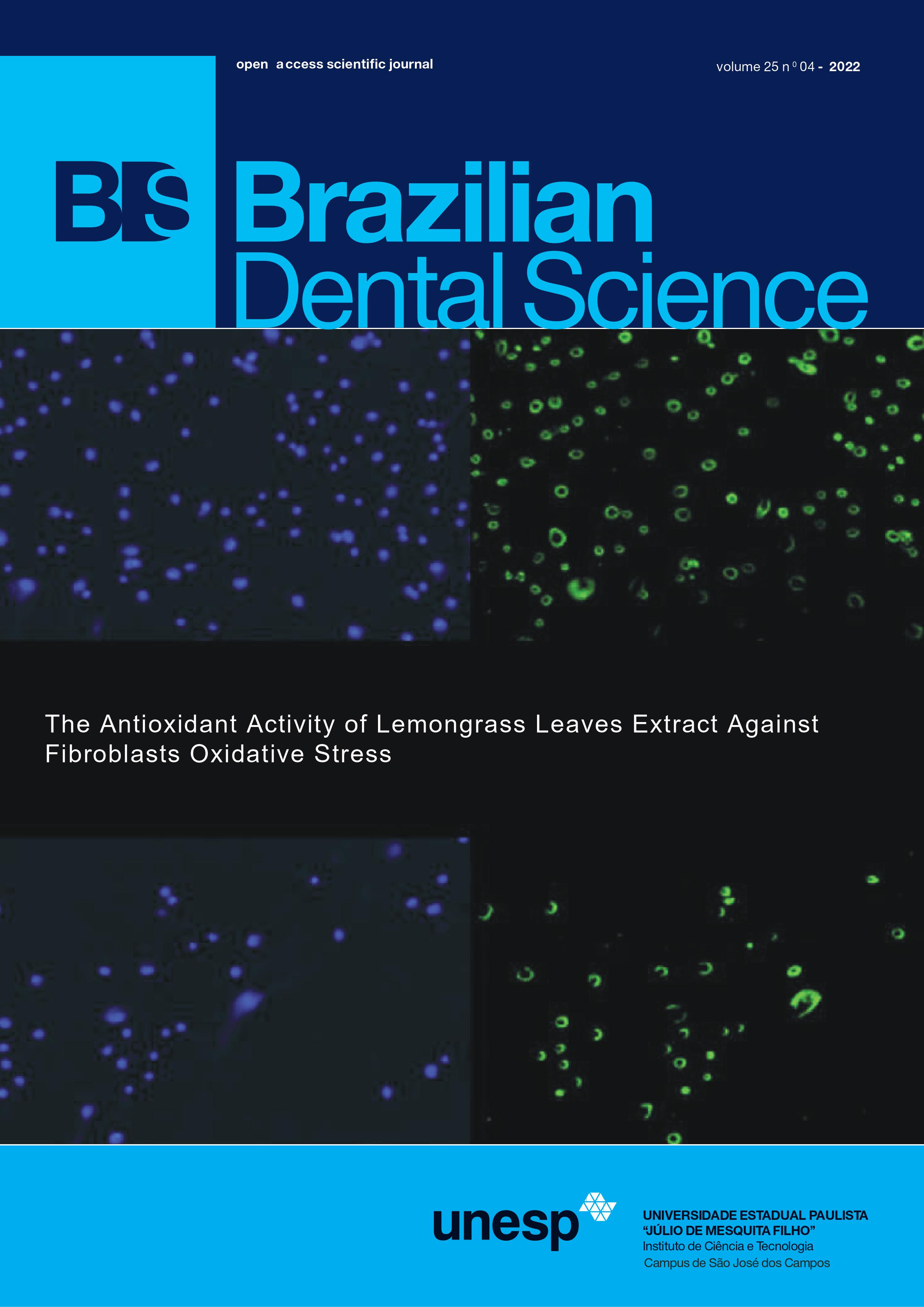Cytotoxicity and antibacterial activity of bleached turmeric hydro-alcoholic extract versus sodium hypochlorite as an endodontic irrigant: in vitro study
DOI:
https://doi.org/10.4322/bds.2022.e3566Resumo
Objective: To evaluate the cytotoxicity and antibacterial effect of bleached turmeric hydro-alcoholic extract
compared to sodium hypochlorite as an endodontic irrigant. Material and Methods: Cytotoxicity was evaluated
on human skin fibroblasts using MTT assay. The irrigants were tested at 1, 5- and 15-minutes time intervals. After
contact time, MTT solution was added and well plates were incubated. After the incubation period, optical density
was read and correlated with cell viability percent. Antibacterial efficiency was evaluated using direct contact test.
Each endodontic irrigant was added to fresh Enterococcus faecalis suspension and brain heart infusion media then
incubated for 48 hours. After incubation period, optical density readings were obtained and read by ELISA reader
at 620 nm. Results: Results of cytotoxicity test revealed that bleached turmeric extract had significant higher cell
viability percent than Sodium hypochlorite (NaOCl) at all time intervals (p<0.001). However, in the intervention
group, cell viability percent significantly decreased over time. Results of antibacterial test showed bacterial inhibition
by both groups with non-significant difference between the two tested groups (p<0.05). Conclusion: Bleached
turmeric hydro-alcoholic extract can represent an herbal alternative endodontic irrigant to avoid the undesirable
toxic effects of NaOCl due to its less cytotoxicity and prominent antibacterial effect against Enterococcus faecalis.
KEYWORDS
Antibacterial effect; Bleached turmeric; Cytotoxicity; Endodontic irrigantion; Sodium hypochlorite.
Downloads
Downloads
Publicado
Como Citar
Edição
Seção
Licença
TRANSFERÊNCIA DE DIREITOS AUTORAIS E DECLARAÇÃO DE RESPONSABILIDADE
Toda a propriedade de direitos autorais do artigo "____________________________________________________________________" é transferido do autor(es) para a CIÊNCIA ODONTOLÓGICA BRASILEIRA, no caso do trabalho ser publicado. O artigo não foi publicado em outro lugar e não foi submetido simultaneamente para publicação em outra revista.
Vimos por meio deste, atestar que trabalho é original e não apresenta dados manipulados, fraude ou plágio. Fizemos contribuição científica significativa para o estudo e estamos cientes dos dados apresentados e de acordo com a versão final do artigo. Assumimos total responsabilidade pelos aspectos éticos do estudo.
Este texto deve ser impresso e assinado por todos os autores. A versão digitalizada deverá ser apresentada como arquivo suplementar durante o processo de submissão.




























